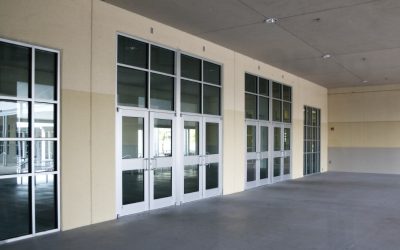Creating new buildings can have a huge impact on the environment not only while the building is being constructed, but also during the building’s lifespan and maintenance. Buildings use resources like energy and water and they also generate waste. That means they release harmful emissions into the atmosphere and often use large amounts of raw materials for construction. Building designers are now facing unique challenges to meet new demands to create facilities that are productive as well as accessible, secure, and even sustainable to minimize their impact on the environment.
There are many economic challenges facing those who are trying to create new buildings today and constructing sustainable buildings often costs more than creating other types of facilities. In order to renovate older buildings and transform them into sustainable buildings, owners can expect to spend even more money than creating a new building altogether. But the sustainability and environmental impact that these buildings have can increase the value of the building and the way it operates for many decades.
The sustainable buildings design supports the idea that we should be good stewards of our environment and conserve natural resources where we can. This is all balanced out by the cost of the benefits as well as the overall mission and function of the building. The main goal of sustainable buildings is to avoid depleting energy sources, raw materials, water, and other natural resources. It also aims to prevent any harm to the environment by reducing any emissions during buildings’ life cycles. In addition, they need to be comfortable, productive, and safe for those who live or work inside.
The definition for sustainable buildings is dynamic and ever-changing, but should always include the following features. First, they should optimize the site and the existing potential of the structure. Second, they need to utilize the best sources of energy in terms of renewable resources. Third, they need to both protect and conserve energy sources by using water efficiently and, reusing and recycling water on site when possible. Fourth, they should use building materials that are preferred by the environment to help cut back on health issues and disposal costs. Fifth, they need to have an enhanced quality indoors in order to maximize occupant health and comfort alongside productivity. Some ways in which that is accomplished is by using plenty of natural lighting, weatherization, and filtering out any moisture or emissions. And lastly, the sustainable buildings need to have operations and maintenance practices that enhance productivity and reduce water or energy uses as the years go by and technology improvements come onto the scene.
Associated Renewable Inc., an end-to-end energy consulting and carbon management firm is an energy consulting and carbon management company provides commercial energy efficiency solutions to help buildings meet their sustainability goals. In order to help businesses and residences reduce energy costs and heighten energy savings, the company takes every step necessary to promote sustainable buildings practices.


